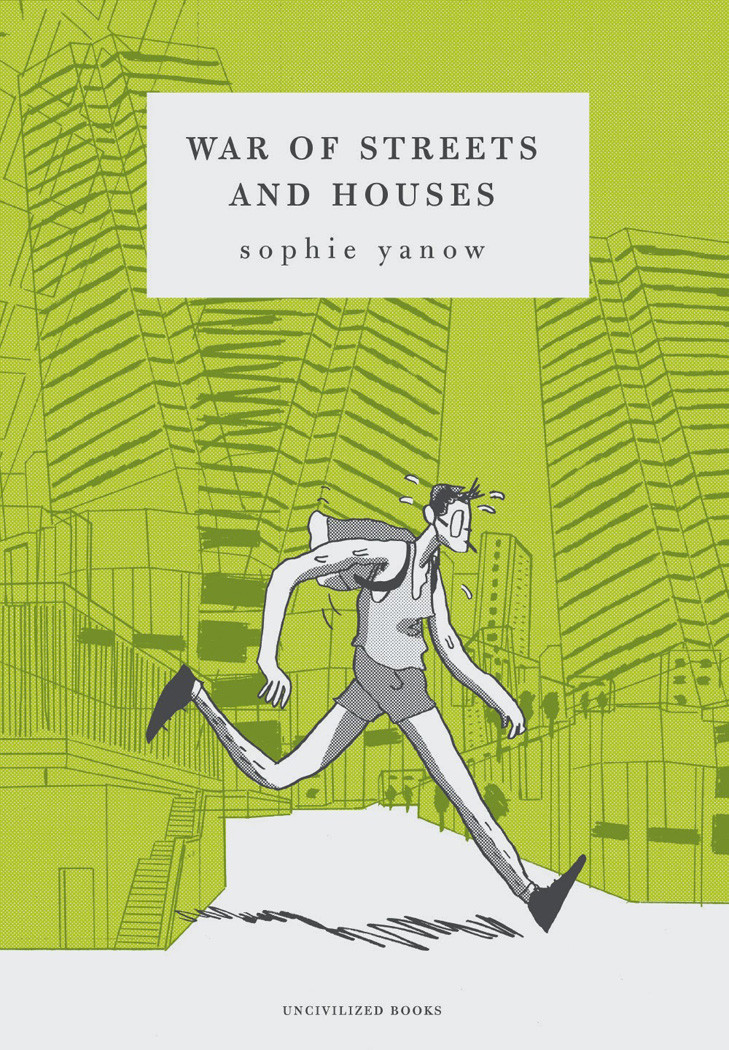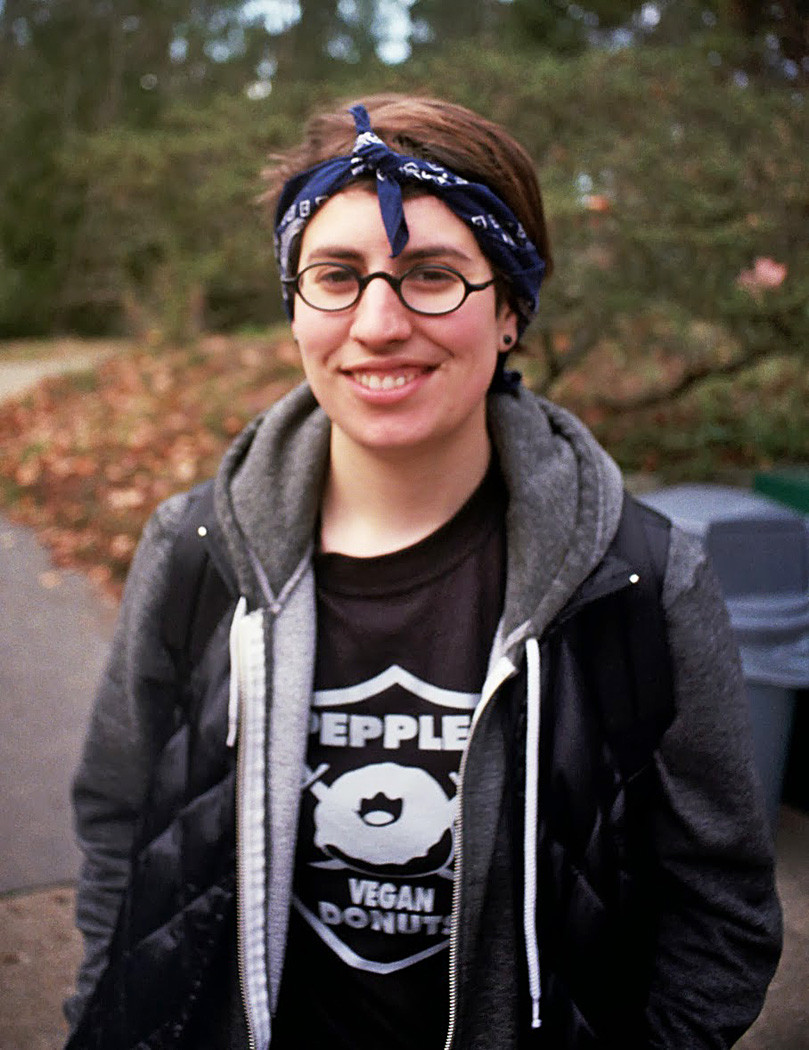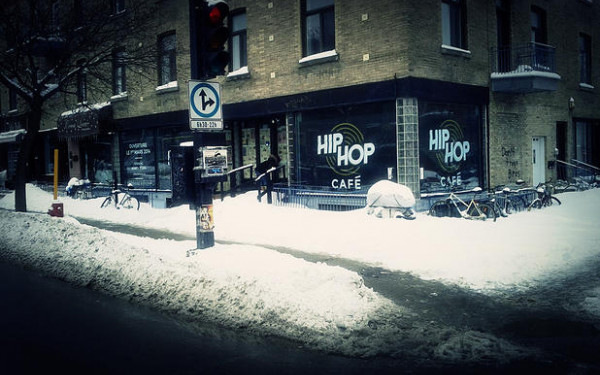Anatomy of a Strike
Graphic Novelist Looks Back at Quebec Student Strike and Police Tactical Responses in New Book
For American illustrator Sophie Yanow, being in Montreal during the Quebec student strike was pure happenstance.
She moved here from San Francisco in 2011 for an artist residency at the Maison de la bande dessiné, and right as she decided to stay permanently in the city, the strike flooded the streets.
Yanow was swept up in the action and participated and documented the marches and tactical meetings. She also worked with the Institut de recherche et d’informations socio-économique.
“I was present for a lot of the demos, and I went to a fair amount of organizational meetings, a lot of community APAQs [Assemblées populaires autonomes de quartier],” Yanow said.
“Also the folks at my studio, we all decided we were going to make a zine. IRIS put out a pamphlet during the strike that was ‘Eight Arguments Against the Hike,’ and we decided to illustrate it, and printed 5,000 copies of it and gave it out to folks.
“I was present at the demos a lot and trying to help inform people, and also trying to encourage folks who weren’t students to get involved. It was saying, ‘Hey, you know, you don’t have to be a student to support the student movement,’” she continued.
Her latest book, War of Streets and Houses, recounts the strike from her perspective and also delves into the history behind police tactical maneuvers against protesters. In contrast, her first book, In Situ, was a bit more light-hearted, inspired by British-American cartoonist Gabrielle Bell and her autobiographical work.

“Gabrielle Bell was doing a comic a day on her website, and I was like ‘I’m going to try that,’ and that’s where it came from, because I realized I totally preferred drawing journal comics and drawing non-fiction,” she said.
“I attended a course at Concordia called Militarism in the City and I did a lot of my own research looking at original documents, so it’s sort of just a retracing of the history of urban planning and how that relates to police control.”
With the annual anti-police brutality march having just taken over the streets this past weekend, Yanow’s new book couldn’t be released at a more ideal time. In it, she breaks down the relationships between police tactics, crowd control, military strategies and urban planning, while also recounting her own experiences.
“The book isn’t a tactical manual so much as a reflection on the history of these things. […] I attended a course at Concordia called Militarism in the City and I did a lot of my own research looking at original documents, so it’s sort of just a retracing of the history of urban planning and how that relates to police control,” she said.
While urban planning may not seem to be directly linked to protests and police presence on the surface, Yanow points out in her book that the layout of public spaces can often dictate the turnout of a protest.

“Kettling is really environmentally influenced, based on having a large enough space to encircle a crowd. When you have a really vast space, it’s kind of impossible to protest unless you have huge numbers, which often protesters don’t have,” she said.
“Like we saw during the student strikes, [protesters use] almost guerrilla tactics, running around in small groups and breaking apart. If you look at the scale of downtown and the roads down there and the plazas and everything versus Villeray or something, it’s a totally different scale that everything is built on.
“It’s not like, ‘if we build the environment like this, nobody will ever be able to protest,’ but there’s a certain tension there,” she continued.
In War of Streets and Houses, Yanow also wants to shift the typical dialogue associated with protests and bring to light entirely new perspectives.
“One of the big things that the media is obsessed with in protests is who the guilty party is, and how it comes down to whether a protester threw a rock first, or hit somebody first, and who provoked who,” she said.
“I’m kind of more interested in contesting the idea that guilt starts in that moment. I wanted to say, ‘Maybe the protesters have been provoked long before this. Maybe our environment is an antagonist as well.’”
When asked about the most interesting aspect of writing her latest book, Yanow deferred back to participating in the strike itself.
“The most fun part of the book, of course, was participating in the casseroles [protests] and everything during the actual strike, moments when everybody was out. It was very nice to be out there, and it wasn’t like a militant action, but to just feel people being supportive was really exciting,” she said.
Yanow hopes that the launch of her new book in Montreal will spur the vivid memories of the strike for those who participated, and educate the students who weren’t in the city for those historic months.
“I think it’s important for students in Montreal, especially new students, to look into what actually happened during the strike if they weren’t present for it.
“A lot happened in a very short time and for those of us that were there, it feels really recent. But it’s hard to see when you walk around now that it even happened,” Yanow said.
War of Streets and Houses book launch // March 20 // Drawn and Quarterly (211 Bernard St. W.) // 7 p.m. // Free admission


_600_832_s.png)




